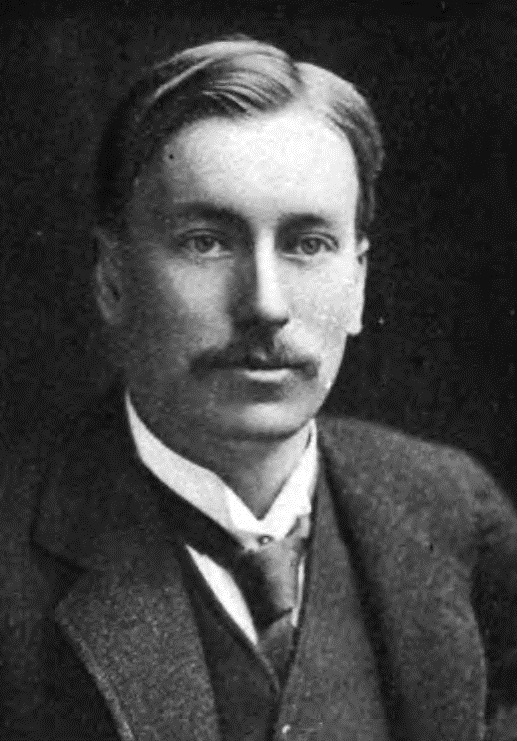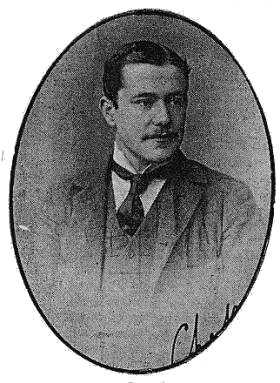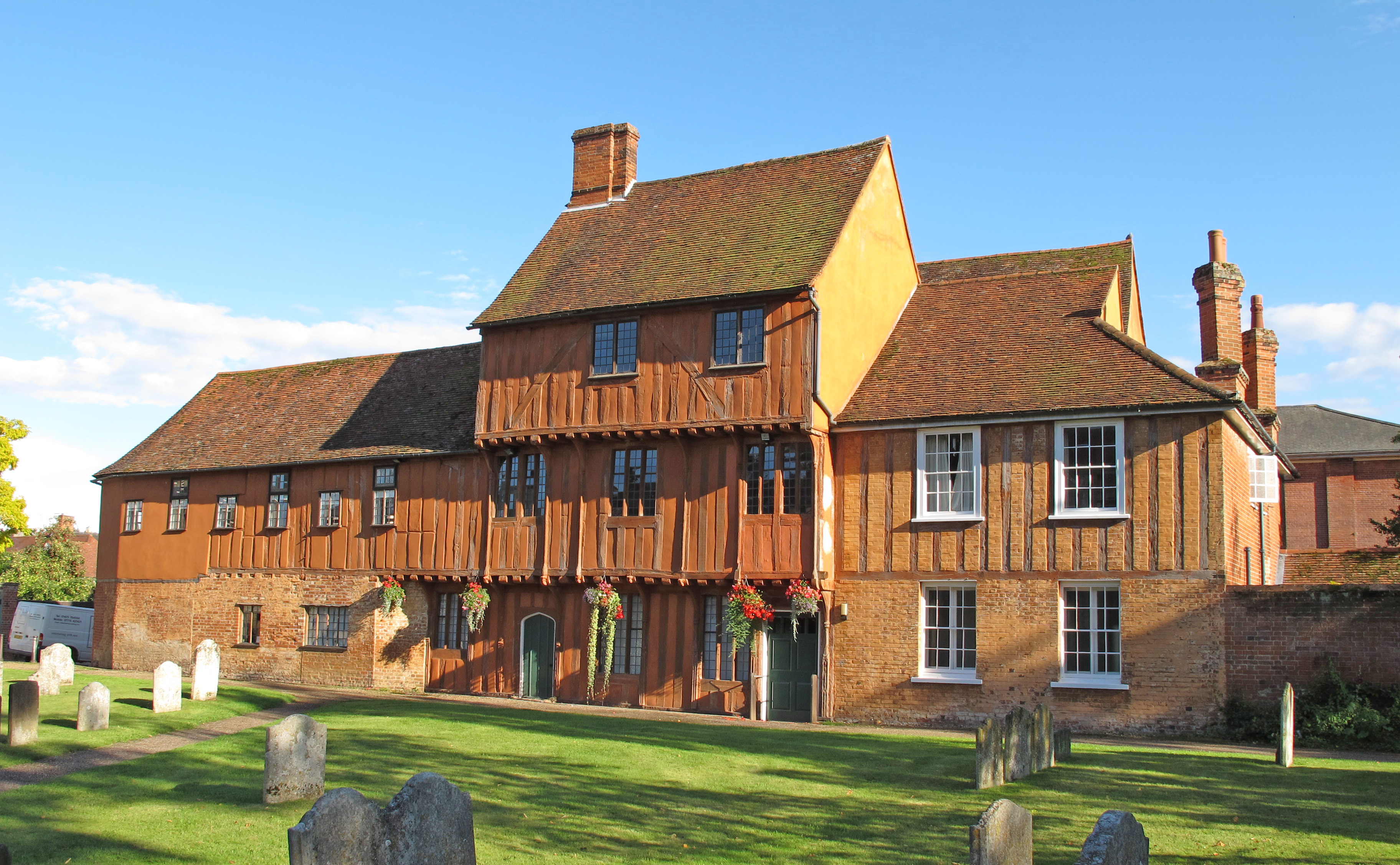|
Sudbury (UK Parliament Constituency)
Sudbury was a parliamentary constituency which was represented in the House of Commons of the Parliament of the United Kingdom. History A parliamentary borough consisting of the town of Sudbury in Suffolk, the constituency returned two Members of Parliament (MPs) from 1559 until it was disenfranchised for corruption in 1844, after which it was absorbed into the Western Division of Suffolk. It was probably enfranchised through lobbying from Ambrose Cave the Chancellor of the Duchy of Lancaster who had interests in the area and could influence the choice of MPs. Sudbury had in the eighteenth Century been seen as a particularly expensive seat but not under the influence of any patron and in the 1761 general election Horace Walpole the cousin of the outgoing MP, Thomas Walpole, had claimed that Sudbury had openly advertised itself for sale with the new MP, John Henniker having to spend £5,500 from the Duke of Newcastle's funds. but not under the influence of any patron The S ... [...More Info...] [...Related Items...] OR: [Wikipedia] [Google] [Baidu] |
Western Division Of Suffolk
The Western Division of Suffolk was a two-member constituency to the Parliament of the United Kingdom established by the 1832 Reform Act and disestablished in 1885. History The seat was created under the Reform Act 1832 as one of two divisions, together with the East Suffolk (UK Parliament constituency), Eastern Division, of the Parliamentary County of Suffolk (UK Parliament constituency), Suffolk. This resulted in a more representative allocation, with a total of four MPs instead of two for the former entire county at large, which still allowed for double voting (or more) of those Forty Shilling Freeholders who also were householders or landlords of any particular boroughs within the county. This Act retained the four largest boroughs of the seven before 1832. With two heirs to their title serving the seat, the Marquess of Bristol, Marquesses of Bristol, the Hervey baronets, Hervey family, were major landowners in the county. The modern seat is at Ickworth House, Ickworth, w ... [...More Info...] [...Related Items...] OR: [Wikipedia] [Google] [Baidu] |
Duke Of Newcastle
Duke of Newcastle upon Tyne was a title that was created three times, once in the Peerage of England and twice in the Peerage of Great Britain. The first grant of the title was made in 1665 to William Cavendish, 1st Marquess of Newcastle upon Tyne. He was a prominent Royalist commander during the Civil War. The related title of Duke of Newcastle-under-Lyne was created once in the Peerage of Great Britain. It was conferred in 1756 on Thomas Pelham-Holles, 1st Duke of Newcastle upon Tyne (of the third creation), to provide a slightly more remote special remainder. The title became extinct in 1988, a year that saw the deaths of the distantly related ninth and tenth Dukes of Newcastle-under-Lyne. Creations First creation (1665) William Cavendish, 1st Duke of Newcastle, was a son of Charles Cavendish, himself the third son of Sir William Cavendish and his wife Bess of Hardwick. One of Charles Cavendish's elder brothers became the 1st Earl of Devonshire (see Duke of Dev ... [...More Info...] [...Related Items...] OR: [Wikipedia] [Google] [Baidu] |
Henry Fortescue (died 1576)
Henry Fortescue (by 1515 – 1576), of Faulkbourne, Essex, was an English politician. He was a Member (MP) of the Parliament of England for Maldon in March 1553 and for Sudbury in 1559, and High Sheriff of Essex and Hertfordshire in 1563. His son, Dudley Fortescue, was MP for Sudbury in 1593. In September 1604, Dudley Fortescue hanged himself at Blunt's Hall in Little Wratting. As a suicide, his property and goods were forfeit to the crown. King James awarded his goods to Margaret Hartsyde, a chamberer servant of Anne of Denmark, and the Privy Council wrote to Sir Nicholas Bacon to make sure she got full benefit.Diarmaid MacCulloch, ''Letters from Redgrave Hall'' (Suffolk Record Society, Boydell, 2007), pp. 82-3 nos. 132, 133. References 1576 deaths People from Braintree District Year of birth uncertain Members of Parliament for Maldon Henry Henry may refer to: People *Henry (given name) * Henry (surname) * Henry Lau, Canadian singer and musician who performs unde ... [...More Info...] [...Related Items...] OR: [Wikipedia] [Google] [Baidu] |
Clement Throckmorton (died 1573)
Clement Throckmorton (c. 1512 – 1573) was an English landowner and Member of Parliament in the middle years of the 16th century. A member of a distinguished Warwickshire family, son of Sir George Throckmorton and his wife Catherine Vaux (daughter of Nicholas Vaux and Elizabeth FitzHugh) and the brother of the influential diplomat Sir Nicholas Throckmorton and Robert Throckmorton and cousin of Henry VIII's last Queen, Catherine Parr, Throckmorton sat in nine Parliaments between 1542 and 1572, representing Warwick four times and Warwickshire twice as well as three other scattered boroughs (Devizes, Sudbury and West Looe). He also had a successful military record, and was appointed Constable of Kenilworth Castle in 1553, a post he held until his death. He acquired the estate of Haseley in Warwickshire in 1554 from his uncle, who had himself acquired it from the Crown after the attainder of its previous owner, the Duke of Northumberland. He also enhanced his fortune thr ... [...More Info...] [...Related Items...] OR: [Wikipedia] [Google] [Baidu] |
Bury St Edmunds (UK Parliament Constituency)
Bury St Edmunds is a constituency represented in the House of Commons of the UK Parliament since 2015 by Jo Churchill, a Conservative. Constituency profile The constituency covers Bury St Edmunds, Stowmarket and smaller settlements on the A14 corridor. Residents' wealth is around average for the UK. History The constituency was created as a Parliamentary Borough in 1614, returning two MPs to the House of Commons of England until 1707, then to the House of Commons of Great Britain until 1800, and from 1800 to the House of Commons of the United Kingdom. By the mid eighteenth century the seat was seen as heavily influenced by the Earl of Bristol and the Duke of Grafton. Its representation was reduced to one seat under the Redistribution of Seats Act 1885. Under the Representation of the People Act 1918, it was abolished as a borough and reconstituted as a division of the Parliamentary County of West Suffolk. As well as the abolished borough, the expanded seat comprised most o ... [...More Info...] [...Related Items...] OR: [Wikipedia] [Google] [Baidu] |
Haverhill, Suffolk
Haverhill ( , ) is a market town and civil parish in the county of Suffolk, England, next to the borders of Essex and Cambridgeshire. It lies about south east of Cambridge, south west of Bury St Edmunds, and north west of Braintree and Colchester. Geography The town centre lies at the base of a gentle dip in the chalk hills of the Newmarket Ridge; running through the town is Stour Brook, which goes on to join the River Stour just outside the town. Rapid expansion of the town over the last two decades means that the western edge of Haverhill now includes the hamlet of Hanchet End. The surrounding countryside largely consists of arable land. History Haverhill dates back to at least Anglo-Saxon times, and the town's market is recorded in the Domesday Book (1086). Whilst most of its historical buildings were lost to the great fire on 14 June 1667, one notable Tudor-era house remains (reportedly given to Anne of Cleves as part of her divorce from Henry VIII and thus titled ' ... [...More Info...] [...Related Items...] OR: [Wikipedia] [Google] [Baidu] |
Hadleigh, Suffolk
Hadleigh () is an ancient market town and civil parish in South Suffolk, East Anglia, situated, next to the River Brett, between the larger towns of Sudbury and Ipswich. It had a population of 8,253 at the 2011 census. The headquarters of Babergh District Council were located in the town until 2017. Origin of the name Skeat, in his 1913 ''The Place-Names of Suffolk'', says this: Spelt ''Hadlega'', R.B.; ''Hadleigh'', Ipm.; ''Hædleage'', in a late chapter, Thorpe, Diplomat, 527; ''Headlega'', Annals of St Neot, quoted in Plummer's ed. of the A.S.Chronicle, ii. 102; ''Hetlega'', D.B., p.184. In D.B. the ''t'' stands for ''th''; and the true A.S. form appears in a Worcs. charter, dated 849, as ''hæðleage''(gen.) with reference to Headley Heath (a tautological name) in Birch, C.S. ii. 40; see Duignan, Placenames of Worcs. The sense is 'heath-lea.' In a similar way the A.S. ð has become t in Hatfield (Herts.) which means 'heath-field'. History Guthrum, King of the Dan ... [...More Info...] [...Related Items...] OR: [Wikipedia] [Google] [Baidu] |
1950 United Kingdom General Election
The 1950 United Kingdom general election was the first ever to be held after a full term of Labour government. The election was held on Thursday 23 February 1950, and was the first held following the abolition of plural voting and university constituencies. The government's 1945 lead over the Conservative Party shrank dramatically, and Labour was returned to power but with an overall majority reduced from 146 to just 5. There was a 2.8% national swing towards the Conservatives, who gained 90 seats. Labour called another general election in 1951, which the Conservative Party won. Turnout increased to 83.9%, the highest turnout in a UK general election under universal suffrage, and representing an increase of more than 11% in comparison to 1945. It was also the first general election to be covered on television, although the footage was not recorded. Richard Dimbleby hosted the BBC coverage of the election, which he would later do again for the 1951, 1955, 1959 and the 1964 ... [...More Info...] [...Related Items...] OR: [Wikipedia] [Google] [Baidu] |
First Past The Post
In a first-past-the-post electoral system (FPTP or FPP), formally called single-member plurality voting (SMP) when used in single-member districts or informally choose-one voting in contrast to ranked voting, or score voting, voters cast their vote for a candidate of their choice, and the candidate who receives the most votes wins even if the top candidate gets less than 50%, which can happen when there are more than two popular candidates. As a winner-take-all method, FPTP often produces disproportional results (when electing members of an assembly, such as a parliament) in the sense that political parties do not get representation according to their share of the popular vote. This usually favours the largest party and parties with strong regional support to the detriment of smaller parties without a geographically concentrated base. Supporters of electoral reform are generally highly critical of FPTP because of this and point out other flaws, such as FPTP's vulnerability t ... [...More Info...] [...Related Items...] OR: [Wikipedia] [Google] [Baidu] |
1885 United Kingdom General Election
The 1885 United Kingdom general election was held from 24 November to 18 December 1885. This was the first general election after an Representation of the People Act 1884, extension of the franchise and Redistribution of Seats Act 1885, redistribution of seats. For the first time a majority of adult males could vote and most constituencies by law returned a single member to Parliament, fulfilling one of the ideals of Chartism to provide direct single-member, single-electorate accountability. It saw the Liberals, led by William Ewart Gladstone, William Gladstone, win the most seats, but not an overall majority. As the Irish Nationalists held the balance of power between them and the Conservatives who sat with an increasing number of allied Unionist MPs (referring to the Acts of Union 1800, Union of Great Britain and Ireland), this exacerbated divisions within the Liberals over Irish Home Rule and led to a Liberal split and another 1886 United Kingdom general election, general elec ... [...More Info...] [...Related Items...] OR: [Wikipedia] [Google] [Baidu] |
Redistribution Of Seats Act 1885
The Redistribution of Seats Act 1885 (48 & 49 Vict., c. 23) was an Act of the Parliament of the United Kingdom. It was a piece of electoral reform legislation that redistributed the seats in the House of Commons, introducing the concept of equally populated constituencies, a concept in the broader global context termed equal apportionment, in an attempt to equalise representation across the UK. It was associated with, but not part of, the Representation of the People Act 1884. Background The first major reform of Commons' seats took place under the Reform Act 1832. The second major reform of Commons' seats occurred in three territory-specific Acts in 1867–68: *the Reform Act 1867 applied to English and Welsh constituencies *the Representation of the People (Scotland) Act 1868 applied to Scottish constituencies and gave Scotland an additional quota of seats *the Representation of the People (Ireland) Act 1868 applied to Irish constituencies. The latter United Kingdom set of ... [...More Info...] [...Related Items...] OR: [Wikipedia] [Google] [Baidu] |
County Constituency
In the United Kingdom (UK), each of the electoral areas or divisions called constituencies elects one member to the House of Commons. Within the United Kingdom there are five bodies with members elected by electoral districts called "constituencies" as opposed to " wards": * The House of Commons (see Constituencies of the Parliament of the United Kingdom) * The Scottish Parliament (see Scottish Parliament constituencies and regions) * The Senedd Cymru – Welsh Parliament, Senedd (see National Assembly for Wales constituencies and electoral regions, Senedd constituencies and electoral regions) * The Northern Ireland Assembly (see Northern Ireland Assembly constituencies) * The London Assembly (see List of London Assembly constituencies) Between 1921 and 1973 the following body also included members elected by constituencies: * The Parliament of Northern Ireland (see Northern Ireland Parliament constituencies) Electoral areas called constituencies were previously used in election ... [...More Info...] [...Related Items...] OR: [Wikipedia] [Google] [Baidu] |






.jpg)